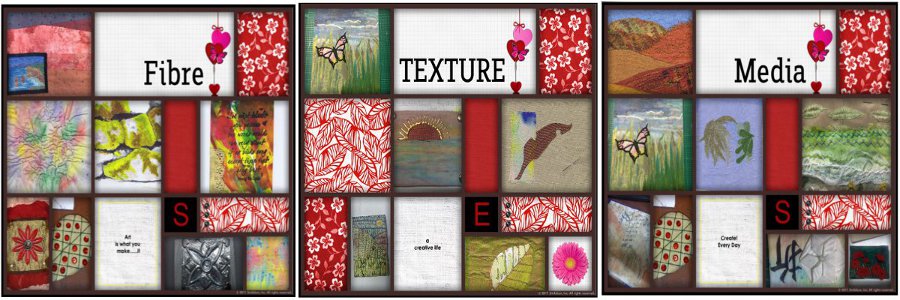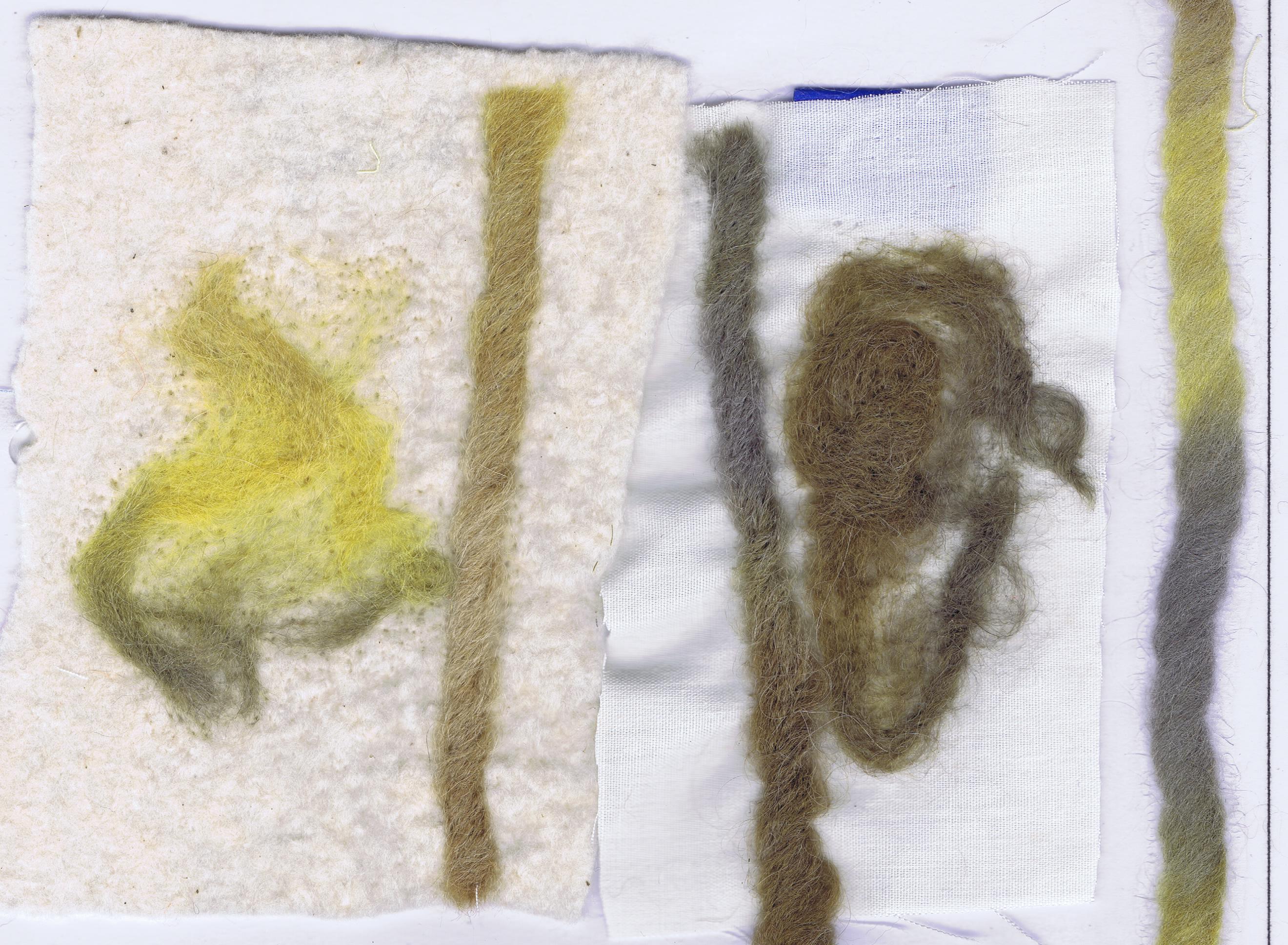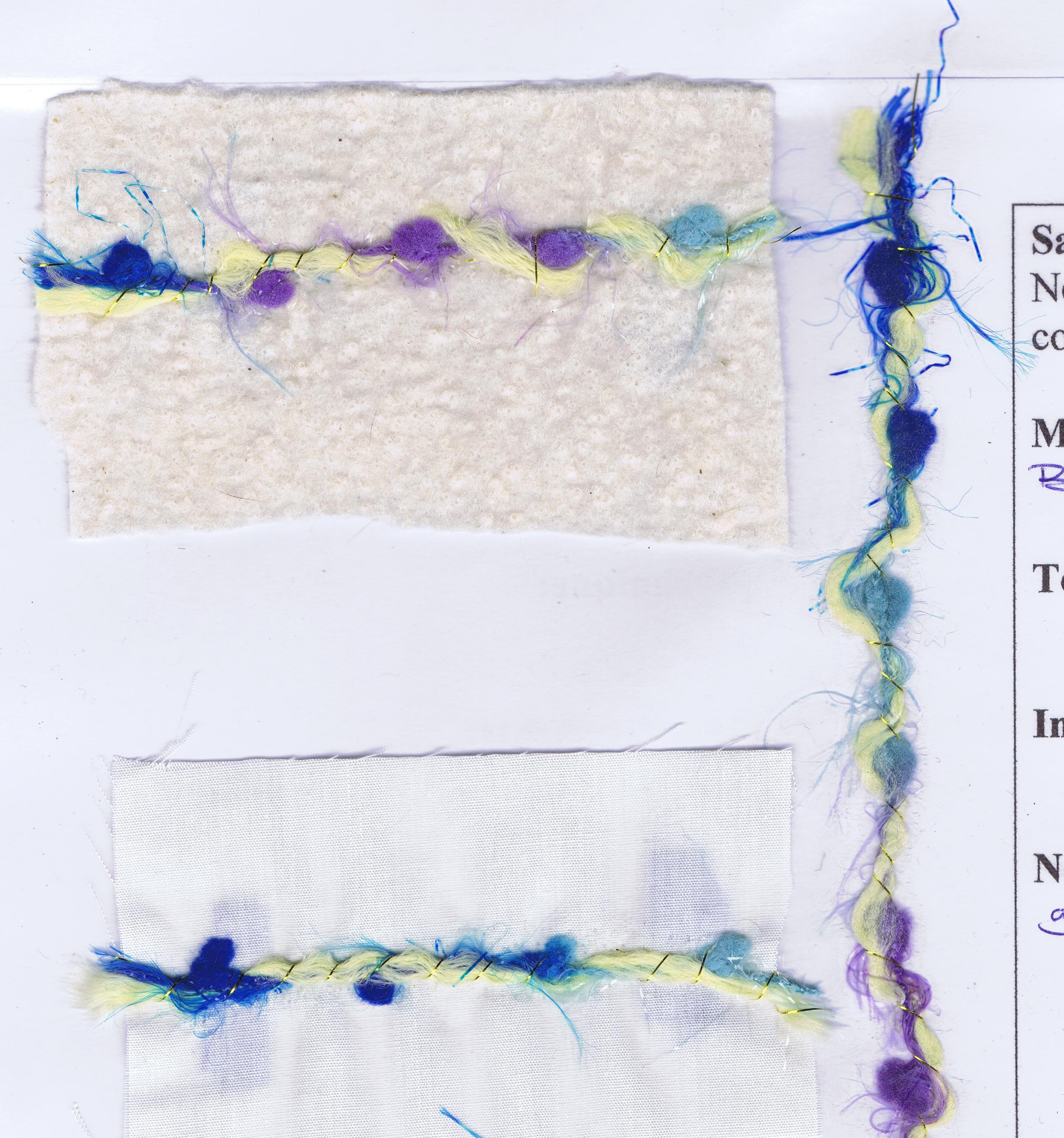Oops, I forgot about this post. Better late than never.
The sample on the left used yarn on it's own. Whilst the sample on the right used yarn as well as slub, or roving.
Each sample has been felted onto cotton and batting and includes a strand of un needlefeted yarn to the extreme right of each picture.
Yarn and Roving
Above is a simple sample of yarn. This was a very soft yarn and felted easily. Most yarns will needle felt on the machine quite easily, irrespective of the fibre type. Some keep their shape like this, whilst some like wools can lose their shape, but both effects are useful.
This yarn has a nub in it and like most yarns, it felts extremely well. The nubs are good for giving colour in a small area.
This is slub or roving. It is the best felter of all because it is not twisted very much at all. It is twisted only enough so that it stays together. In the textile mill, this is useful so that the long slubs can be run through dye vats. In felting it is useful to us, because it can cover large areas with colour very quickly and can be broken apart into roving quickly.
This slub type yarn also has a metallic woven in. I often do this myself with a bit of slub, to attach metallic or other non-felting threads. The metallic also adds a bit more twist to the slub and gives it more of a yarn shape although when you look carefully, you can see that the red fibres themselves are not twisted much at all.
I hope you have enjoyed this series on Machine Needlefelting Fibre Samples. I will be continuing in a few weeks with fabric samples.
Happy embellishing



















































